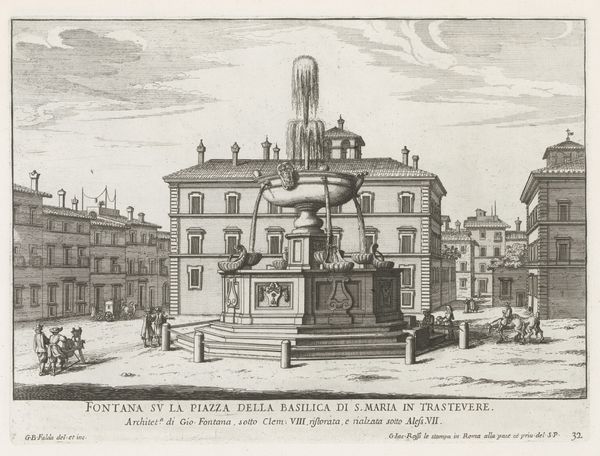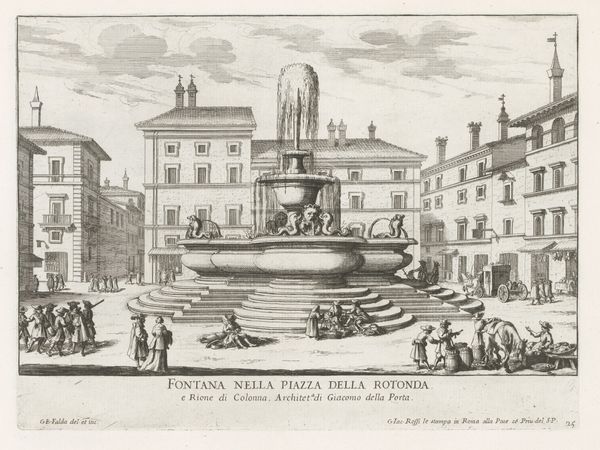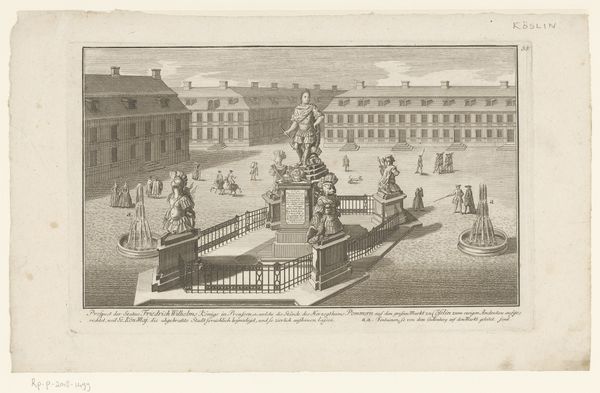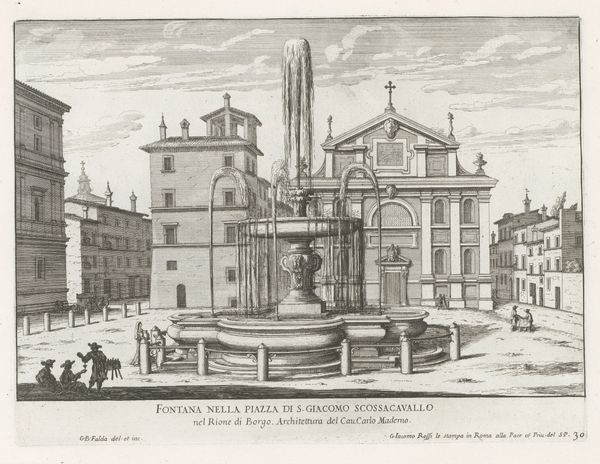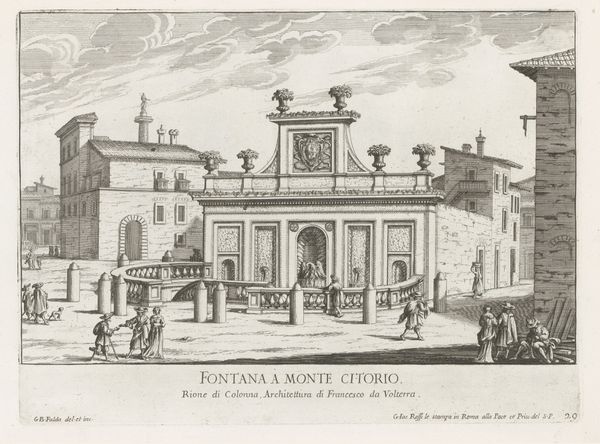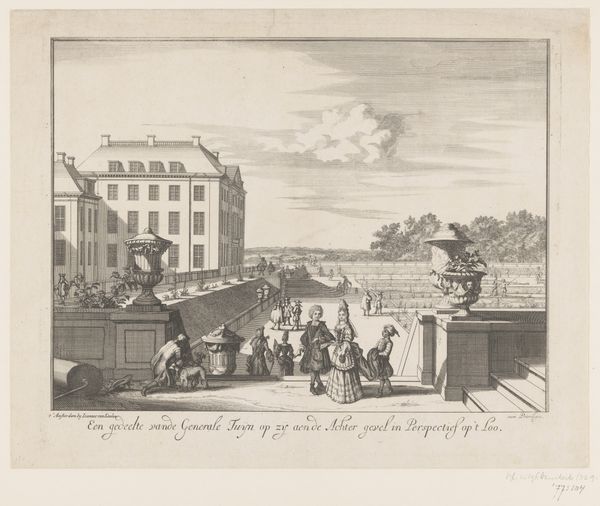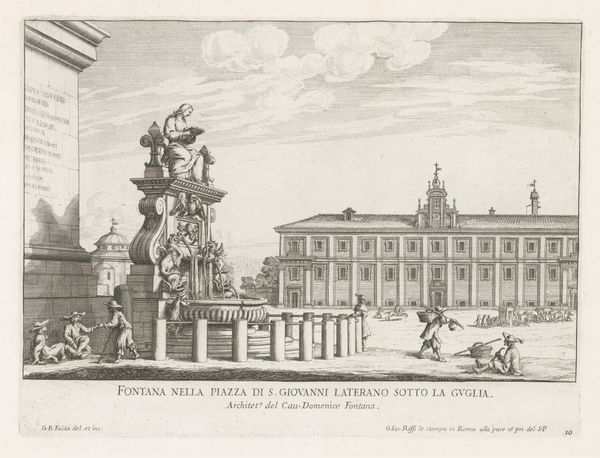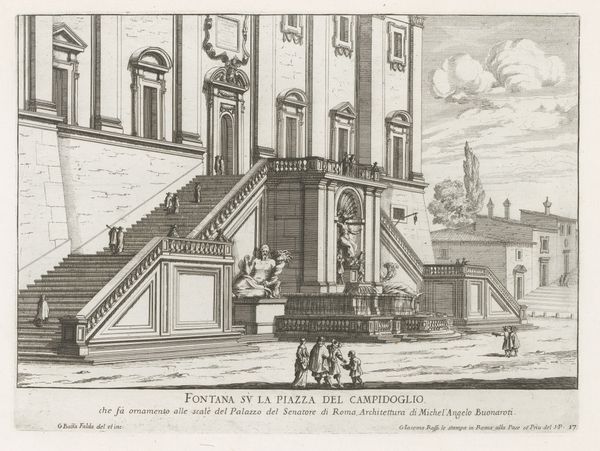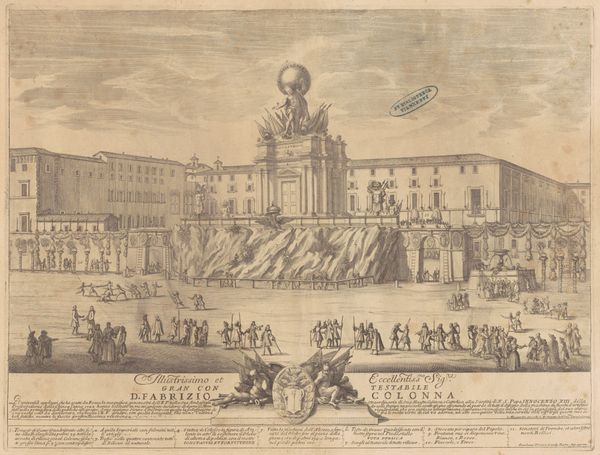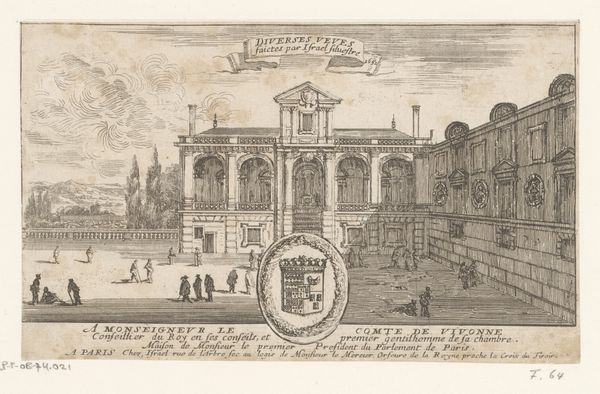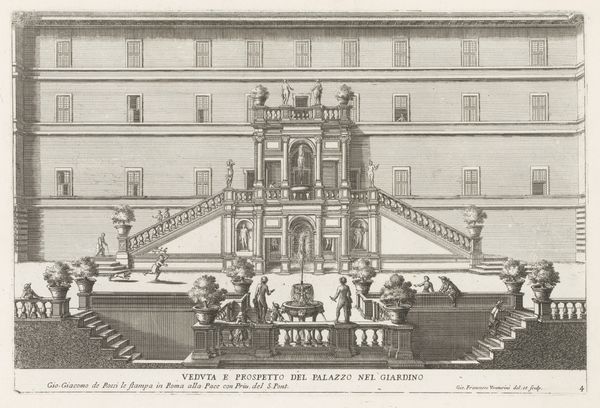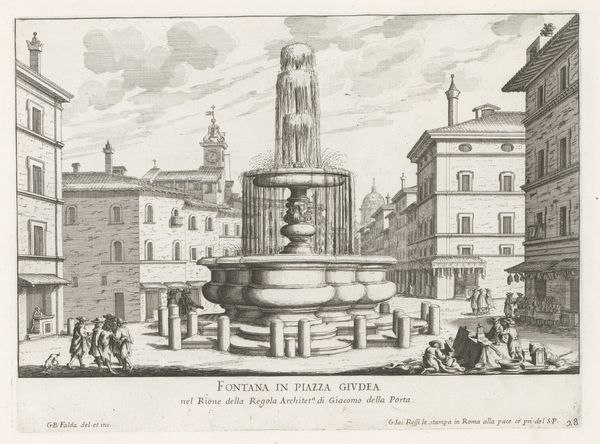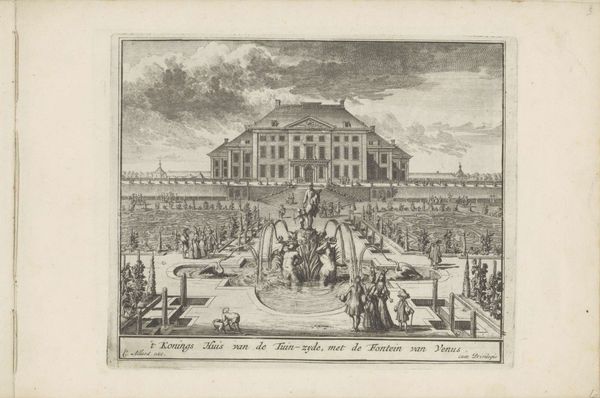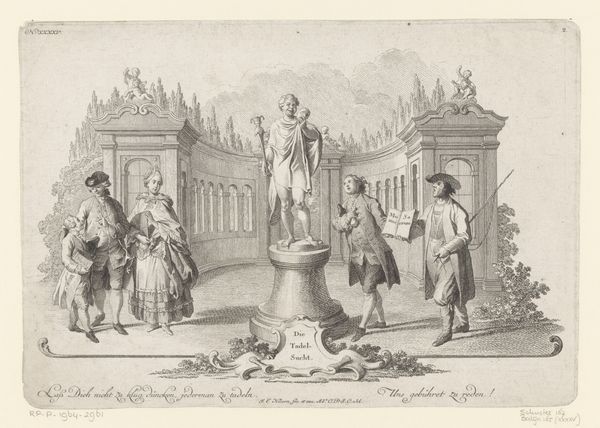
Fontana delle Tartarughe op Piazza Mattei te Rome 1653 - 1691
0:00
0:00
print, engraving, architecture
#
baroque
# print
#
landscape
#
geometric
#
line
#
cityscape
#
italian-renaissance
#
engraving
#
architecture
Dimensions: height 212 mm, width 287 mm
Copyright: Rijks Museum: Open Domain
Editor: Here we have Giovanni Battista Falda's engraving, "Fontana delle Tartarughe op Piazza Mattei te Rome," created between 1653 and 1691. It depicts the Turtle Fountain in Rome. It’s a very detailed print, almost architectural in its precision. What stands out to you? Curator: Falda’s print intrigues me because of its meticulous attention to detail, not just of the fountain itself, but the surrounding urban fabric. Let’s think about the means of production: engraving. It was a highly skilled craft, laborious and time-consuming. This speaks to the value placed on accurate representation and dissemination of knowledge, especially of architectural marvels. Consider the paper itself – where was it produced? Who had access to such images, and what purpose did they serve in that era? Editor: So, you're focusing on the production and consumption of the print rather than just the artistic skill involved in rendering the fountain? Curator: Exactly. The fountain, built using travertine and bronze, was also a feat of material resources and labor. But Falda's print shifts the focus to how this information becomes accessible. How does the print mediate between the physical monument and its audience? It speaks volumes about social context and power structures: Who could afford such prints? How did they shape perceptions of Rome and its architectural achievements? Editor: It's interesting how shifting the focus to materials and the production process opens up a whole new way of understanding the artwork. Curator: Precisely. By considering the print as a product of specific materials, processes, and social conditions, we challenge the traditional view of art as existing purely in the realm of aesthetics, bringing attention to materiality and labour. It encourages us to investigate who controlled those means of production and distribution, too. Editor: I hadn't really considered it that way before. I’m now aware that this detailed print does far more than just depict a fountain! Thank you. Curator: And I believe I will explore how contemporary methods of imaging architectures impact local, skilled labour and sustainable solutions to protect architectural patrimony.
Comments
No comments
Be the first to comment and join the conversation on the ultimate creative platform.
